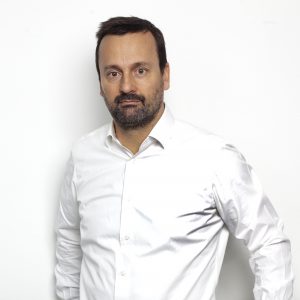Right now, FTTH investment is a strategic priority for the European Commission. The ambitious Digital Single Market framework highlights connectivity as a crucial tool to drive the European economy. As economic activity becomes increasingly dependent on technology, ensuring that organisations and citizens alike have access to high-speed Internet is essential. This is even more the case in the wake of the pandemic, which underlined the need for fail-safe, super-fast broadband everywhere.
Subsequently, Europe’s fibre build-out is gaining pace. In the cases of some jurisdictions, like Portugal and France, fibre coverage is set to become quasi-ubiquitous (>95% of the population will have Gigabit access), largely driven by the success of government policy. In other countries, private interests have done their part to kick-start the FTTH rollout. In Germany, the UK and Italy, this has been achieved on a massive scale, with millions of lines laid, even in rural areas.
As is clear, this presents enormous opportunities for telecom providers at every level. We’re entering a new epoch of connectivity where legacy infrastructure is being replaced with next-generation technology. This doesn’t only refer to the cables; data centres and mobile backhaul for these new, data-intensive communications solutions also present substantial business opportunities in both tech and telecom.
As the FTTH market matures, new challenges also arise. Continued expansion requires innovative strategies, such as leveraging AI to identify and prioritise cost-effective areas with high penetration potential. With these points in mind, let’s dive into the case studies.
Table of Contents
What makes FTTH business sustainable?
It’s the fundamental question of the most high-level conversations between C-levels in telecoms: how can we make an FTTH scheme a long-term success? The fibre revolution presents a remarkable opportunity; but that said, it’s not an entirely straightforward nor fail-safe market to enter. Attracting sustainable, long-term investment, in particular, requires finesse.
As such, operators still require a convincing business model. To further drive and sustain this build-out, particularly in remote areas, the business case needs to be compelling. Up until very recently, big incumbents have been reluctant to extend the network into rural areas due to a weak business case. Now, changes in shareholders and lenders, and the increased presence of specialist infrastructure funds, have changed the landscape.
This results in a domino effect of sorts. These public funds, in particular, attract more traditional, risk-averse pension funds and insurers as sources of capital. Consequently, this investment has become the engine of “build-out machines” as they have been dubbed by the FTTH Council Europe. Operators can demonstrate clear long-term targets making what was once a risky landscape become relatively predictable. As a result, they’re attracting a new class of private financiers.
So what is FTTH business, in essence? As is clear, it’s a lot more than merely laying fibre optic cables. It’s about having a robust business case, attracting funding, and being able to provide a compelling offering to customers, whether they be wholesale or retail. Only then can telecom providers capitalise on the current boom driven by the European Union’s ambitions for the Digital Single Market.
If strategy is indeed the key, what are the models that operators are using to de-risk their build-out plans and attract investment? Let’s look at the options.

Model 1: Deutsche Glasfaser de-risks FTTH investment with demand aggregation
Key features
- Supported by agreements with municipal authorities
- Relies on effective marketing campaigns ahead of build-out
- Capital is reinjected in expansion, fuelled by venture capital and public funds attracted by the project’s assured uptake.
The first model is founded on securing a guaranteed initial retail customer base. The network operator carefully identifies a group of municipalities with an appropriate number of households per square kilometre. The operator then launches a campaign to convince residents and businesses to commit to a 24-month contract, and should 30-40% of the population agree, the operator secures investment to build the FTTH network.
Typically, this is financed by private capital, generally via bank lending. This is because, with an assured customer base, the project is substantially de-risked. The company can then redeploy a portion of private capital in different areas to further drive demand aggregation, and thus, facilitate rapid expansion financed by regionally-focused banks and complemented public funding.
A successful example of this model is Deutsche Glasfaser, which currently serves 920,000 homes and 20,000 businesses in Germany. After a successful merger with Inexio, it is building over 6 million FTTH connections in Germany with €8 billion of private and public capital. The municipalities it selects are generally rural, with the largest settlement being just 12,500 people. Before work starts, they require an aggregated pre-commitment of 40% of residents.
Deutsche Glasfaser has achieved a remarkable 85% success rate with their build-out projects. The marketing plan is simple: they attract new customers by offering access speeds up to 1 Gbit/s downstream for €25 per month for the first year. Thereafter, the monthly price varies by the speed profile chosen with prices ranging from €45 to €90. Interestingly, 90% of their predominantly retail customers don’t take the cheapest offer and instead opt for higher speeds.
Meanwhile, Deutsche Glasfaser has expanded its wholesale services from mainly local ISPs to contracts with Telekom Deutschland and Vodafone. Their pricing is very competitive, rivalling Telekom Deutschland’s own copper VDSL offering.
Model 2: CityFibre’s wholesale anchor tenant strategy
Key features
- Operator signs binding wholesale contracts with an “anchor tenant”
- These relationships are supported by partnership rather than rivalry, stabilising the market
- This stability attracts capital investment and bank loans from risk-averse players, such as public funds.
In this case study, fibre expansion is based on securing long-term purchasing commitments by one or more initial wholesale customers. Exemplified by CityFibre in the UK, these binding wholesale agreements stabilise FTTH investment by creating partnerships rather than rivalry. It’s attractive to private financiers because of the security; meanwhile, the less volatile wholesale-only business model appeals to infrastructure funds.
CityFibre began life in 2011 as a small startup whose modus operandi was to rescue failed fibre projects in small UK cities. They deployed their wholesale-only model early on; one such example is their deal with retail broadband providers TalkTalk and Sky to build a 1 Gbit/s capable fibre network in York. TalkTalk and Sky committed to a prepayment and customer migration plan, securing the project’s business case.
However, perhaps their most notable deal was their 2017 project with UK mobile giants Vodafone. CityFibre was contracted to build a 1 million household FTTH footprint with Vodafone guaranteeing 20% take-up for a period of 10 years under an exclusivity contract. Since, the deal has evolved; in 2020, CityFibre acquired the FibreNation project within which TalkTalk was a key stakeholder. This compelled them to renegotiate with Vodafone, which they did successfully and further solidified their wholesale-only model.
A key advantage of this strategy in the UK market is that it’s up to the access taker to design the downstream/upstream speed profiles. Both Vodafone and TalkTalk have the option to throttle speeds if they wish, enabling them to upsell 1 Gbit/s access to retail customers without incurring higher wholesale costs. This creates an important differentiation between CityFibre and the major incumbent BT OpenReach, giving them the edge where they operate.
Model 3: How Eurofiber met the demand for ultra-reliable networks
Key features
- Meet high-end connectivity needs in order to command high subscription prices.
- This strong business case attracts venture capital funding, which in turn, is reinjected into aggressive expansion and acquisitions
- Present in both wholesale and retail markets.
Commercial operations like factories, data centres, public buildings, and mobile backhaul facilities demand quality and reliability. Operators that can ensure these services have the ability to command higher prices from these businesses. By meeting high-end connectivity needs, companies can secure long-term contracts (sometimes 10 years + for mobile backhaul) that substantially de-risk the venture. This, in turn, attracts venture capital funding to fuel aggressive expansion and acquisitions, while virtually negating the need for public support.
One company working off this principle is Eurofiber. Launched in 1999 by a group of venture capital-backed entrepreneurs, Eurofiber has now laid 38,000 km of fibre optic cables in the Low Countries, France and Germany. It also owns 10 data centres in The Netherlands and France, while connecting several other third-party data facilities.
Their philosophy allows wholesale and retail customers the ability to develop their own transmission network. This is achieved by providing managed dark fibre, which is underground ducts and subducts that Eurofiber maintains, while the customer has the freedom to install the transmission equipment of their choice. Today, this offering is complemented by services such as a direct connection to cloud computing platforms including AWS, Azure and Google. All of their transmission products enable connectivity up to 100 Gbit/s. Furthermore, Terabit connectivity can be delivered to customers with specific requirements.
Eurofiber has been operating on this model for the best part of two decades, demonstrating its sustainability. In 2002, a major broadband service provider was secured as a wholesale customer for dark fibre to backhaul from the company’s co-location centres. This was quickly followed by initial deals with two major mobile network operators to connect their base stations, and later, a deal was made with a new incumbent that entered the market in 2012.
In the past few years, Eurofiber has extended its expertise in reliability to other projects. They’re the core backbone and local access provider for various smart city and connected mobility projects, including 5G small cell locations. Meanwhile, they’re staying true to the aggressive expansion strategy and entering the FTTH market in Germany.
Model 4: Using AI to target low-cost deployment and high penetration opportunities
Key features
- Leverages AI to identify and prioritise areas with high potential ROI.
- AI analyses numerous factors, including socio-demographics, infrastructure costs, and competition, to plan the ideal network deployment.
- Reduces deployment costs by targeting areas with the best combination of potential customers, revenue, and construction costs
As with any industry, artificial intelligence offers substantial opportunities for optimisation in telecoms. Industry experts suggest that telecommunications operators seeking to expand their FTTH network should deploy AI to identify lucrative opportunities. While initial deployment strategies based on traditional market analysis can result in higher-than-expected costs and lower-than-anticipated take-up rates, AI analysis can pinpoint cost-effective areas with high penetration potential.
To improve outcomes, companies can adopt AI-assisted planning models. These models incorporate a comprehensive range of variables, including the distance of residential buildings to existing fibre routes, the number of wireless subscribers in each area (as potential FTTH customers), and other relevant factors.
Testing has shown that AI models can identify markets where deployment costs would be 5 to 7% lower than initially targeted areas. Moreover, these models can predict penetration levels up to 10% higher in these alternative markets. This approach significantly enhances forecast returns and optimises network deployment strategy.
Moreover, by considering competitive dynamics and alternative broadband technologies, AI can help mitigate the risk of overbuilding, ensuring that network deployment strategies are aligned with market realities.
Each model requires a mastermind
These are four very different approaches to attracting FTTH investment, but all are success stories. They each have various things in common: an assured customer base in the long term; a compelling sales and marketing strategy; and support from reliable investors, whether they be public or private.
But how were these four commonalities arrived at? What was it that ultimately steered these projects towards success and financial sustainability? What is really the common denominator? The answer is simple: the driver is talent. Two of the four were Outvise clients (Eurofiber and CityFibre). With these companies, we provided the freelancers to draw up a strategy that worked. Our service was end-to-end, offering expertise in everything from financial modelling to marketing strategy.
These business models were designed by experts in the fibre landscape in Europe. As a member of both the FTTH Council Europe and MENA, Outvise is dedicated to providing the best talent to realise operators’ ambitions. We provide a complete solution; from investment and M&A through to PMI, restructuring and marketing, Outvise freelancers to give companies the advice they need.
This is vitally important as fibre rollout in Europe gains pace. These three business models discussed here are successful, but as competition intensifies, new and existing incumbents alike will need all the help they can get. Evolving market conditions will require novel strategies and experts on the pulse will be indispensable. Explore Outvise’s portfolio of FTTH experts now – and connect with the talent you need in as little as 48 hours.
Pau Cerdà is co-founder of Outvise. Pau has founded several digital startups and consulting companies. He advised some major telecom and media groups. Former Oliver Wyman. Telecom Engineer + MBA (ESADE)


![[Updated] The state of the fibre network in Europe from 2023-2029](https://blog.outvise.com/wp-content/uploads/2022/05/fibra-1-300x300.jpg)


No comments yet
There are no comments on this post yet.